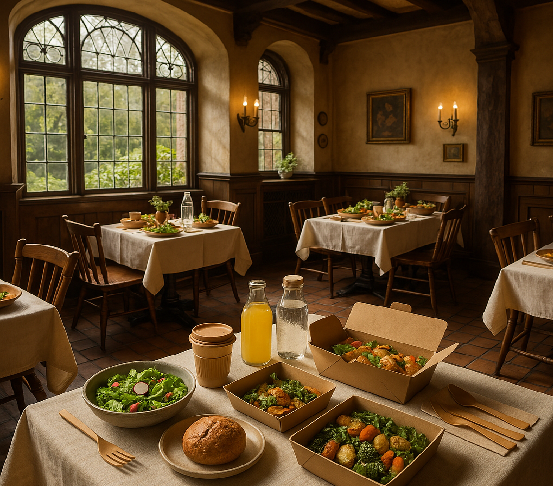Historic building restoration projects are increasingly merging architectural preservation with modern sustainability goals. Restoration window glass plays a key role in this transformation, offering a blend of traditional craftsmanship and advanced energy-efficient technology. These glass solutions preserve the visual charm of heritage properties while enhancing insulation and reducing carbon emissions.
Successful implementation of restoration glass requires skilled artisans familiar with historical glazing techniques, such as lead came construction and period-accurate glass fabrication. When combined with sustainable architecture, this practice enables restaurants housed in historic buildings to reduce energy consumption without compromising their original character.
Farm-to-Table Movement and Local Sourcing

Much like restoration glass preserves the building’s soul, the farm-to-table movement brings authenticity to the dining experience. Restaurants focused on local sourcing build strong relationships with nearby farmers and tailor their menus around seasonal produce.
- Build relationships with local growers
- Understand regional growing cycles
- Adjust menu items based on ingredient availability
This approach not only boosts the local economy but also minimizes transportation emissions and food waste. Seasonal planning encourages chefs to innovate with what’s available, creating memorable dishes that reflect regional identity.
Waste Reduction and Circular Economy Principles
Just as restoration window glass gives new life to old materials, waste reduction strategies repurpose what would otherwise be discarded. Restaurants are increasingly adopting circular economy principles that treat waste as a resource.
Circular economy principles encourage restaurants to transform waste into valuable outputs through composting, recycling, and reuse initiatives.
Common strategies include composting food scraps, donating excess meals, and using all parts of an ingredient creatively. These efforts not only help the environment but also lower operational costs through better resource efficiency.
Energy Efficiency and Green Building Design
Modern restaurants consume substantial energy for cooking, refrigeration, and heating. Integrating restoration glass as part of a larger green design strategy helps reduce heat loss while preserving architectural integrity. Restaurant facilities that adopt energy-efficient systems benefit from reduced utility bills and improved comfort for diners.
Additional green upgrades include:
- LED lighting and smart thermostats
- Energy Star-rated appliances
- Low-flow plumbing and greywater systems
- Drought-resistant landscaping for outdoor areas
Together with restored materials like heritage glass, these features show a restaurant’s commitment to sustainability while maintaining an inviting, stylish space.
Optimizing Building Materials for Sustainable Impact
While many sustainability efforts focus on food and operations, the building envelope is just as important. Using restoration or energy-efficient glass in windows and façades reduces thermal transfer, enhances natural lighting, and cuts down on HVAC costs. For restaurants located in older buildings, this creates a win-win: conserving history while embracing environmental responsibility.
Sustainable Packaging and Delivery Solutions
As food delivery continues to grow, sustainable packaging has become a priority. Restaurants are moving away from single-use plastics in favor of biodegradable containers and reusable programs.
Eco-conscious packaging solutions include:
- Compostable paper and plant-based plastics
- Reusable takeout boxes with return incentives
- Minimalist packaging designs to reduce waste
These initiatives are often supported by staff training programs that reinforce sustainability practices throughout the organization. Restaurants also engage with local communities and environmental groups to educate and involve patrons in their green mission.
Conclusion
Sustainability in modern restaurant design is about more than just the menu, but it’s about the materials, energy use, and long-term vision for the space. Restoration window glass is a powerful symbol of this evolution, bridging the past with the future by allowing historic buildings to meet today’s energy and environmental standards. By combining thoughtful building design with sustainable food practices, restaurants can lead by example, honoring heritage while paving the way for a greener industry.

